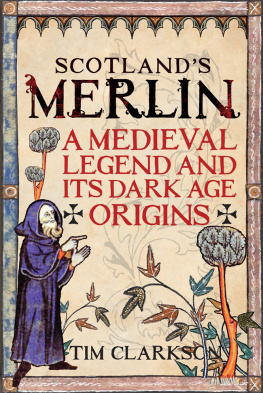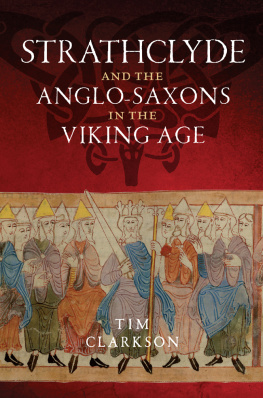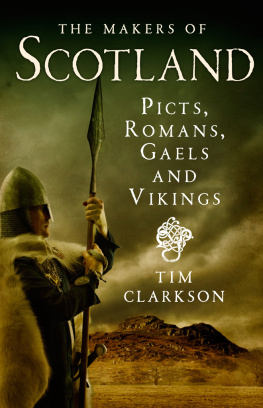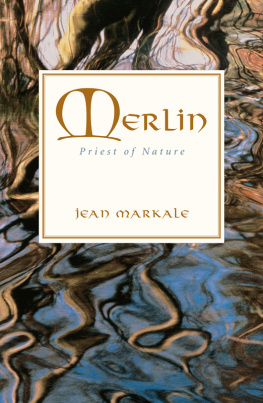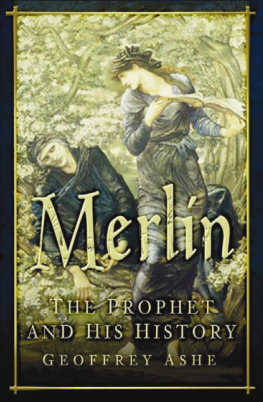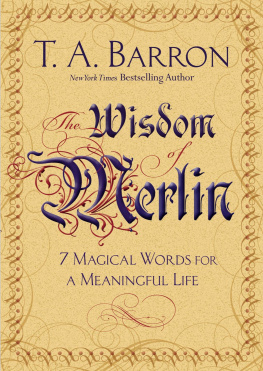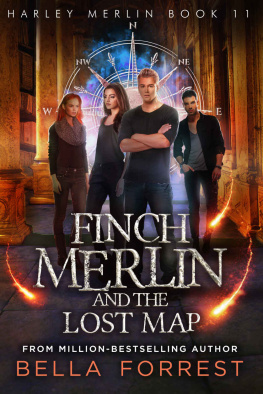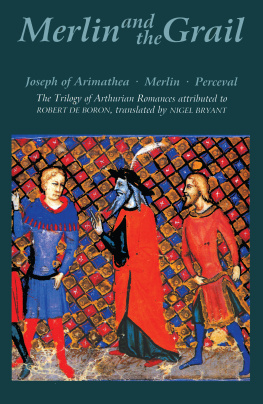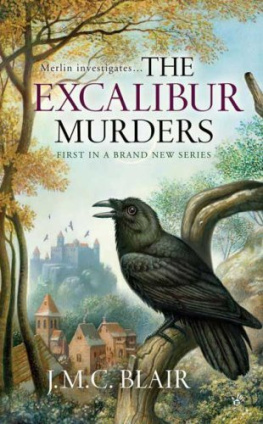SCOTLANDS MERLIN
First published in Great Britain in 2016 by
John Donald, an imprint of Birlinn Ltd
West Newington House
10 Newington Road
Edinburgh
EH9 1QS
www.birlinn.co.uk
ISBN: 978 1 906566 99 9
eISBN 978 1 907909 38 2
Copyright Tim Clarkson 2016
The right of Tim Clarkson to be identified as the author of this work has been asserted by him in accordance with the Copyright, Designs and Patents Act, 1988
All rights reserved. No part of this publication may be reproduced, stored, or transmitted in any form, or by any means, electronic, mechanical or photocopying, recording or otherwise, without the express written permission of the publisher.
British Library Cataloguing-in-Publication Data
A catalogue record for this book is available on request from the British Library
Typeset by Hewer Text UK Ltd, Edinburgh
Printed and bound in Britain by Bell and Bain Ltd, Glasgow
CONTENTS
PLATES
MAPS AND GENEALOGICAL TABLE
Maps
Genealogical table
INTRODUCTION
Few characters from the legendary lore of Britain are more recognisable to a modern audience than Merlin. Like King Arthur and Robin Hood, he is both familiar and mysterious an enigmatic figure who seems to stand on the shadowy frontier between history and myth. In common with Arthur and Robin, he has made the transition from medieval folklore to modern popular fiction, and from page to screen. Indeed, it is through cinema and television that most people probably encounter Merlin today. Such media usually visualise him as a wizard at King Arthurs court a trusted counsellor and mentor. On screen he is frequently portrayed as an old man with white hair and beard, like Tolkiens Gandalf, but the most popular characterisation of recent years shows him as a young sorcerer at the start of his career. Both images can be traced back to different strands of a richly layered medieval legend.
Did Merlin really exist? Many people who are fascinated by his legend see this is an important question, yet the answer is not a straightforward Yes or No. The question itself is too simple, for the legend of Merlin is complex and multilayered. As a major component in the broad genre of Arthurian literature, Merlins story has a long pedigree reaching back nearly a thousand years. As a subject for serious academic study, it has generated a lot of discussion and a large number of scholarly publications. How Merlin has been represented in various literary forms, from the Middle Ages to our own era, is a large topic in itself. Much of it lies outside the scope of this book, which is chiefly concerned with the origin of the legend. Here, the question of Merlins historical existence is seen as having three parts: When did the Merlin legend begin? To where can its roots be traced? Is Merlin based on a real person? All three are explored in the following chapters. They are discussed against the backdrop of a widely held belief that the legend originated in the story of a real person who lived in Scotland in the sixth century AD.
Terminology: chronology and geography
Throughout this book, the term medieval is used in relation to a period known as the Middle Ages. In its broadest sense, and in a European context, this period encompasses one thousand years of history from c. AD 400 to c. AD 1500. The first six centuries to c.1000 are often described as the Dark Ages, a label coined to reflect the decline of Roman civilisation in western Europe and the resurgence there of indigenous barbarian cultures. Although not a particularly accurate term it is at least a familiar one and is therefore used in this book. Many historians prefer the less judgmental early medieval and this term also appears here. For the twelfth century onwards, as far as the beginning of the modern era in the sixteenth, the term High Middle Ages is used.
The books geographical terminology is intended to avoid ambiguity and anachronism. Here, the name Britain has no political connotation and refers solely to the island of Britain and its associated smaller isles (though not, of course, the separate land-mass of Ireland or any part of it). British is here used mainly of the Britons, the native Celtic people who once inhabited the whole island. In the early medieval period or Dark Ages, they increasingly lost control of their ancestral territory to other peoples such as the Scots and Anglo-Saxons. By c.800, at the start of the Viking Age, the territories under British rule had been reduced to three enclaves in the far west: Cornwall, Wales and the valley of the River Clyde. The original homeland of the Scots lay in north-west Britain, in modern Argyll and the neighbouring isles, in a region they called Dl Riata. They spoke Gaelic, the language of the Irish, with whom they had long had a close relationship via the narrow seas that connected rather than divided them. Like the Britons, the Scots were a Celtic people. The same cannot be said of the Anglo-Saxons or English, whose ancestors had arrived in Britain from the North Sea coastlands of Continental Europe in the fourth and fifth centuries. They were a Germanic people, speaking a language very different from the native Celtic tongues of the island. Their takeover of much of the south pushed the frontier of British-ruled territory westward. By c.800, a small group of powerful English kingdoms controlled a very large area. One of these, Northumbria, stretched from the Firth of Forth to the Humber and Mersey estuaries and from the east coast to the west. Its northern neighbours were the still-independent Britons of the Clyde and also the Picts, another Celtic people who inhabited much of the highland region of the far north-east. As the ninth century progressed, the Picts began to merge with the Scots to form a single people the embryonic Scottish nation living within a single, Gaelic-speaking kingdom called Alba. Before c.900, however, the terms Scotland and England did not exist in any meaningful political sense. Not until the Viking Age got well under way in the tenth century did the idea of two large, unified realms begin to emerge. Both terms are therefore used cautiously throughout this book, usually in reference to broad geographical topics such as the landscape of Scotland, with no political connotation unless required by the context. The more neutral terms northern Britain and southern Britain tend to be preferred. Another term used here is the Old North, a translation of Welsh Hen Ogledd, this being a useful umbrella label for the lands of the North Britons in the Dark Ages. The region itself corresponds roughly to what is now southern Scotland below the ForthClyde isthmus, together with some adjacent parts of what is now England. It was the homeland of the aforementioned Clyde Britons and their compatriots in other northern kingdoms until the latter were absorbed into Anglo-Saxon Northumbria (a process completed before AD 700).
Terminology: literature and language
At the heart of this book is an investigation or quest: the search for the origins of Merlin. This is primarily a journey through the literature of the legend in the hope of tracing its roots. The key objective is to identify the real Merlin, the historical figure upon whom the original version of the legend was based. The prime candidate was first put forward in the Middle Ages, in a Latin text called Vita Merlini Silvestris, Life of Merlin of the Forest. His name, however, was not Merlin, even though the Vita observes that he was already regarded in medieval times as the original figure behind the legend. The

